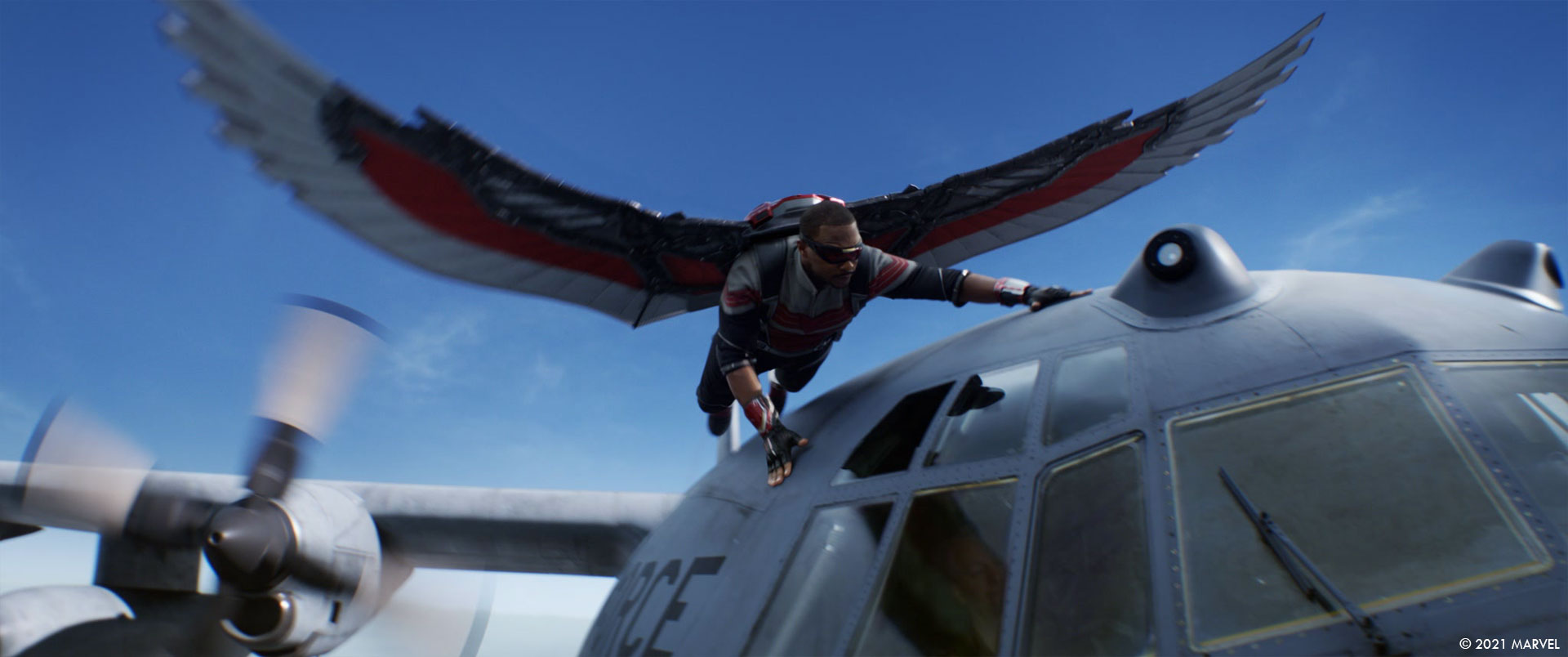Eric Leven started his career in visual effects in 1996 at Tippett Studio and worked on Starship Troopers. He has worked on a number of the studio’s projects including Cloverfield, Cosmos: A Spacetime Odyssey, Ted 2 and The Orville.
What was your feeling to join the MCU?
It was an exciting opportunity to get in on the ground floor of their new streaming shows. Additionally, this is exactly the kind of VFX work I like to help create: giant helicopter battles, fights on moving trucks; working on any one of these sequences would be a blast so I felt lucky to have the opportunity to work on lots of them all one show.
How was the collaboration with Director Kari Skogland?
Kari brought her own unique viewpoint to the show and the sequences which was great, but she also gave us a wide berth when designing the effects heavy sequences.
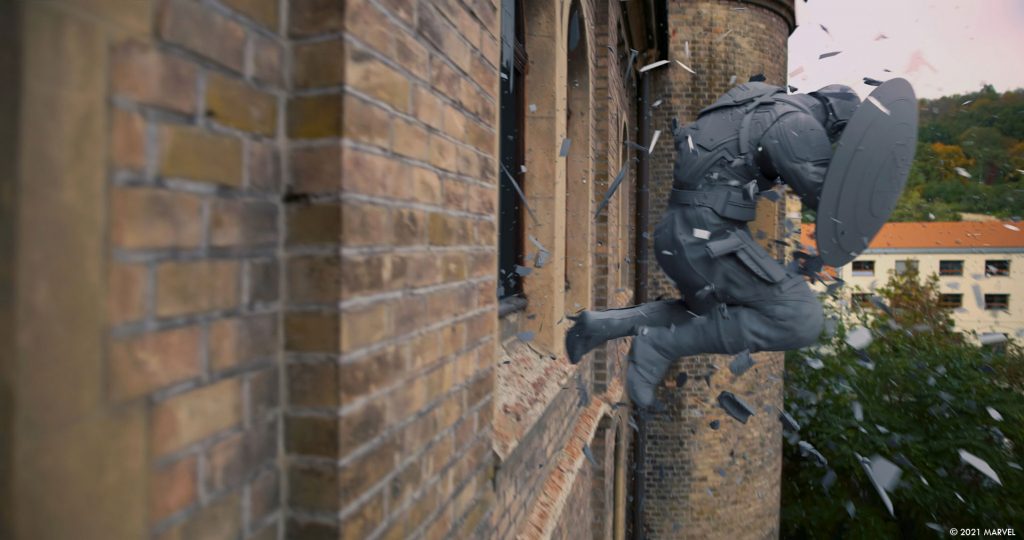
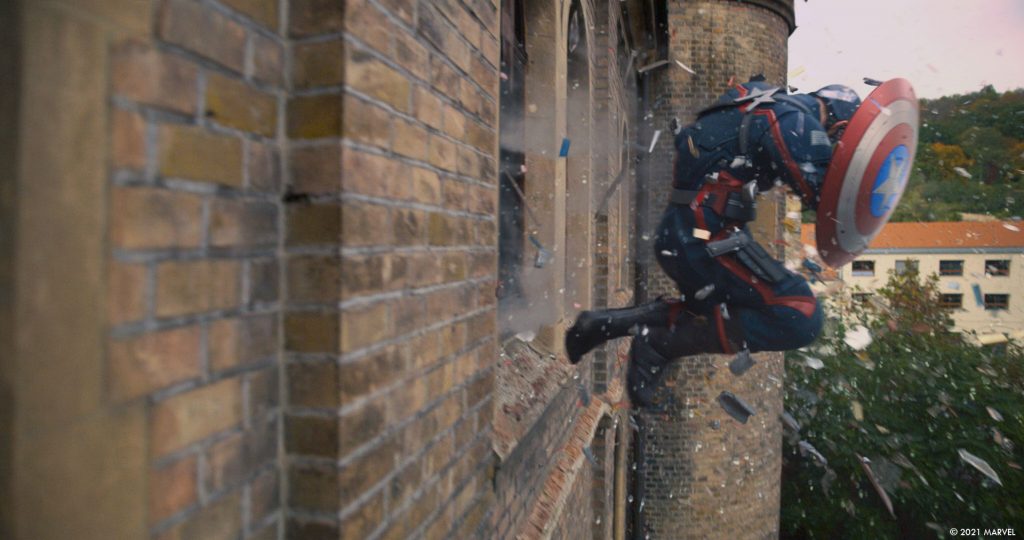
What was your approach for the flying sequences with Falcon?
The approach was to keep things as grounded and realistic as possible. In the past, shots of Falcon flying were usually either wides with medium lenses or closeups with slightly longer lenses. In reality, if you’re filming someone air to air and keeping pace with them, you’re going to use long lenses (because you can’t get too close to the subject), or you’ll use cameras mounted to the subject which typically have short lenses, like « action » cameras. There’s great reference of both of those setups; Jetman Dubai has amazing long lens air to air shots and there’s great footage of cameras mounted to wingsuit pilots like the Red Bull Air Force. So, we started there and then allowed artistic license in when we wanted some of the more « impossible » footage. The hope is that if you ground enough in reality, the sequence feels more real and photographic as opposed to video game cinematography which is often physically impossible to shoot.
The other method used to keep things realistic was to actually film as much air to air as possible. This was the first time Falcon would have an aerial sequence that was shot in the air. We worked with some of the best skydivers and wingsuit pilots in the world to get some truly spectacular footage, including Capt. Vassant actually riding a wingsuit pilot in the air and some hand-to-hand fighting during free fall. Watching the stunt team work to get these shots based on our previz in the air, not just once but then resetting in mid-air to get additional takes during one jump, was awe-inspiring.
Combining the aerial footage with bluescreen footage shot on the ground with Anthony Mackie allowed us to get some truly realistic shots. Even if we ended up replacing that footage with CG (which we often did), it was great photographic reference of, for example, what a guy dressed as Falcon looked like as he flew across the sun at 10,000 ft, or how an operator moved the camera while filming wingsuit pilots diving through the frame.
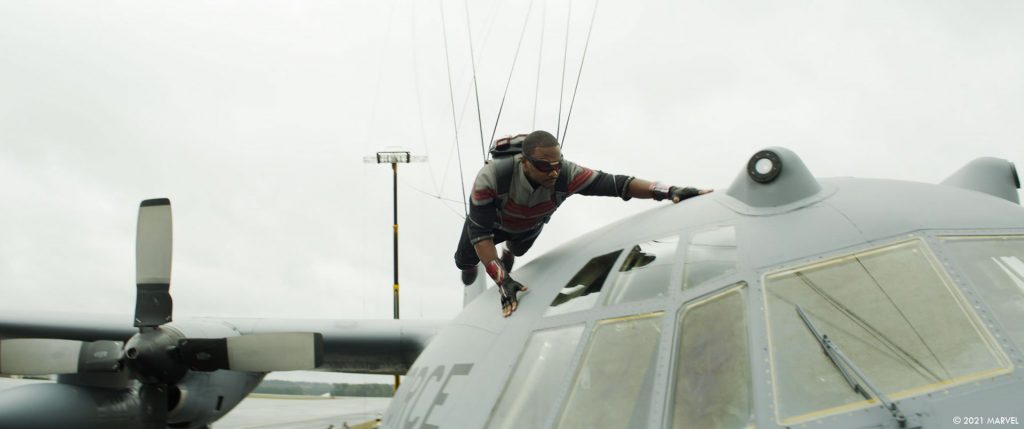
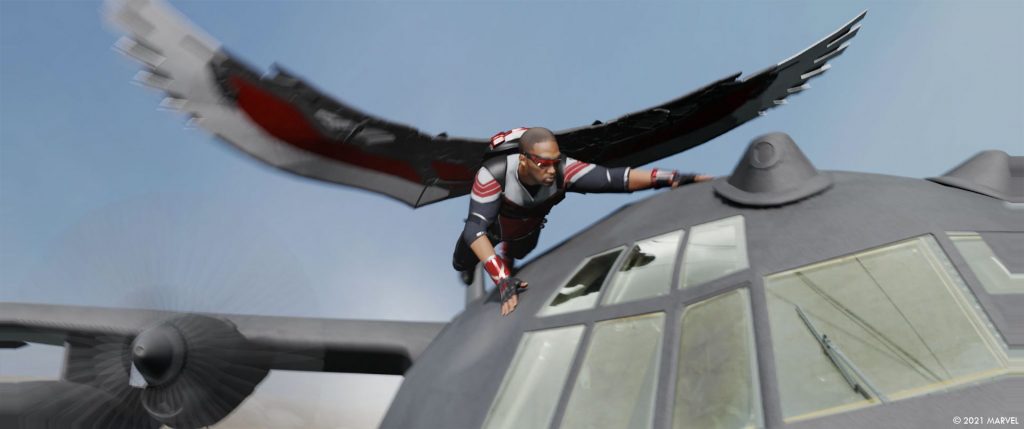
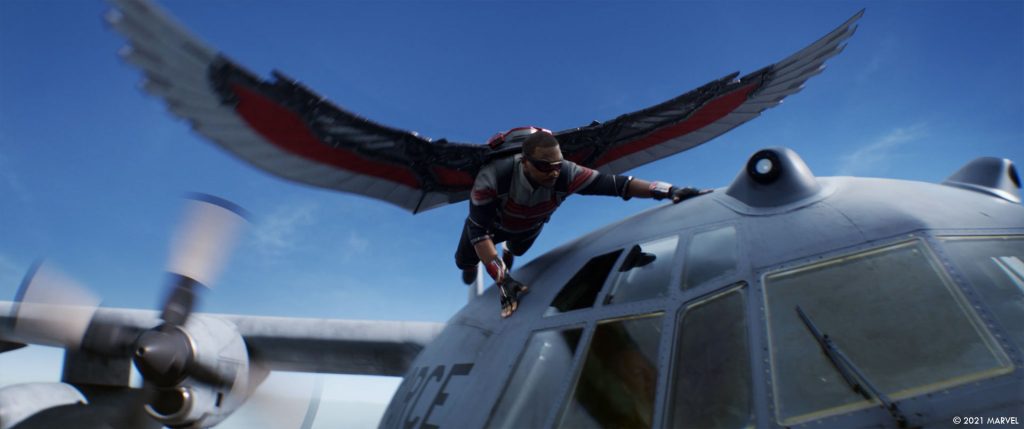
Can you elaborate about the creation of the Falcon various suits and especially the Captain America suit?
By the time VFX comes in, the suits have typically already been designed and built by Marvel’s visual development team and the show’s costume designer. Our main job on this show was to fix Captain America’s cowl; hiding seams and removing unwanted stretching and bulging in the costume.
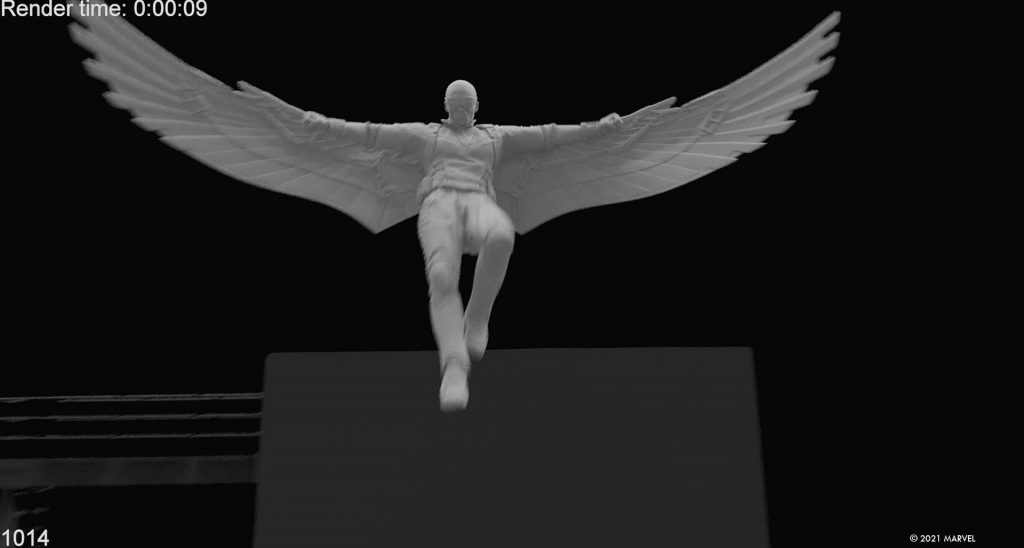
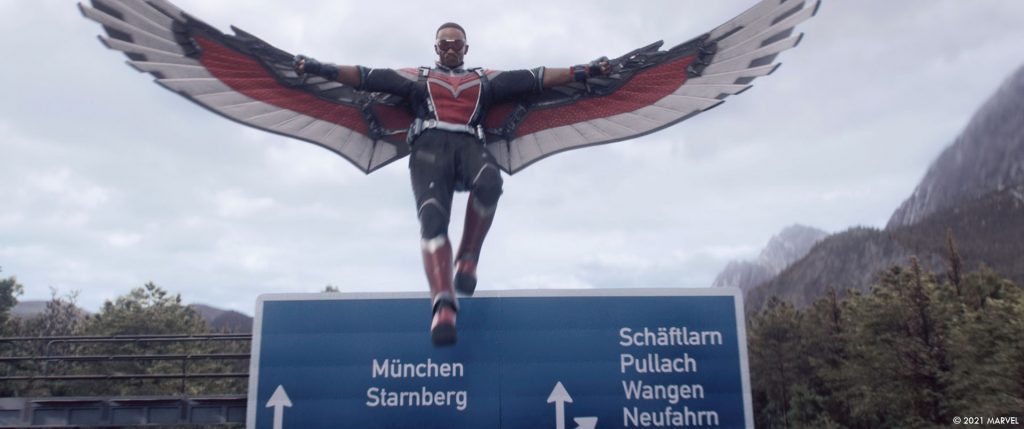
Can you elaborate about the creation of the city of Madripoor?
Beside the comics, did you receive specific indications and references for Madripoor?
Ray Chan and the art department provided some great key art for us to base the look of the city. Madripoor in the comics has always been very stylized and our job was to ground it a bit more in reality. We looked at several different harbor cities for inspiration; Hong Kong foremost among them.
How did you create New York for the intense action sequence in the final episode?
For Cap’s, we shot aerial helicopter plates of NYC but as the sequence changed and became more complex during production, it became necessary to move towards a mostly full CG environment. We leveraged Sony Pictures Imageworks’ ever improving digital version of NYC, which they were able to build upon for this show.
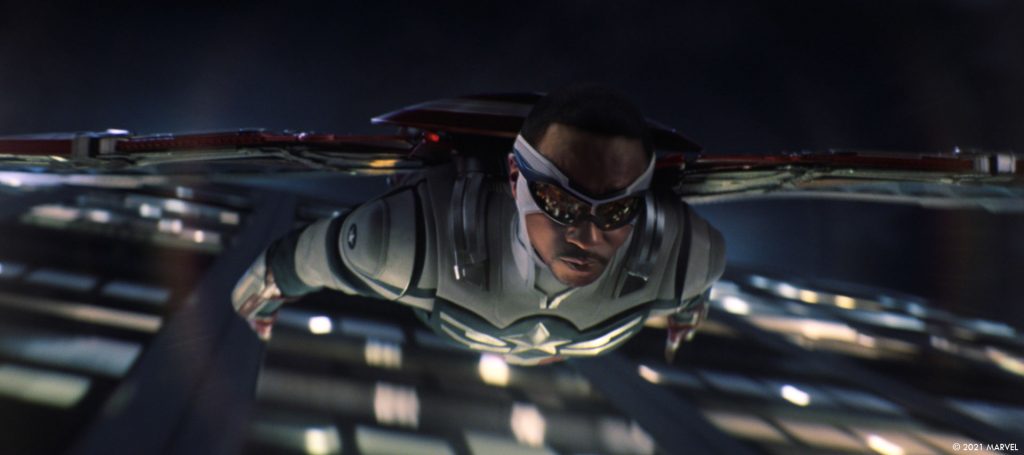
Which sequence or shot was the most challenging?
I know this is a boring answer, but each sequence had its own unique challenges; not just from a technical standpoint, but from a story standpoint as well. And « breaking the story » of those sequences was often just as challenging as the actual VFX work. The most complex sequences on the show were the Hot Potato (desert aerial chase) in 101, the truck top fight in 102, and the helicopter chase and the construction pit fight in 106.
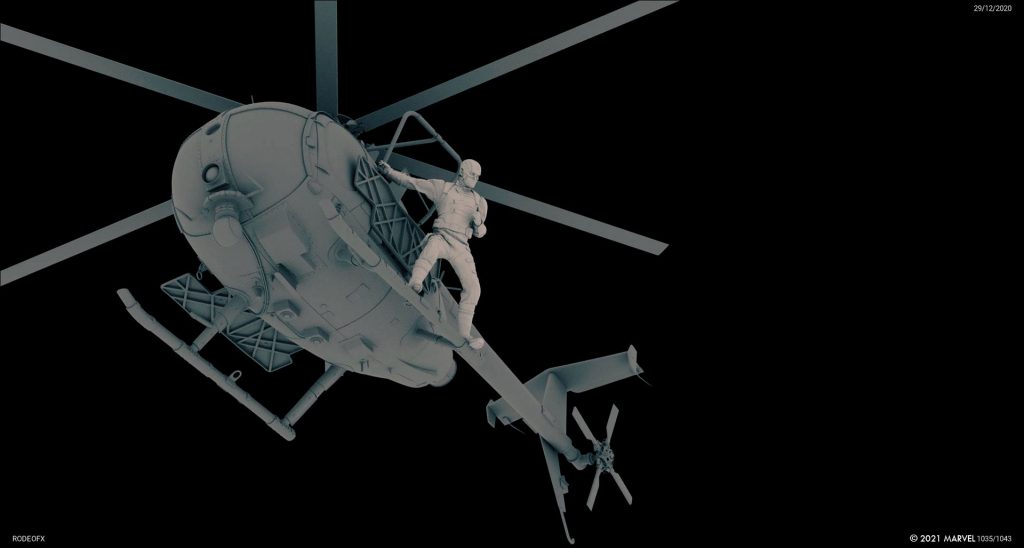
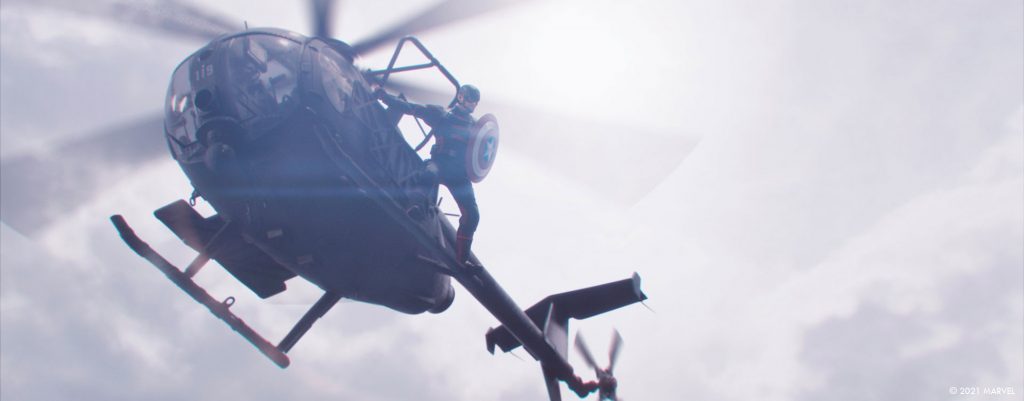
How did you choose the various vendors?
VFX facilities were chosen based on their capabilities to deliver photorealistic effects while delivering on time and on budget.
What is your favorite shot or sequence?
The Hot Potato sequence has a special place in my heart because it was the first major sequence started, and we worked on it thru the entire production; over 16 months from start to finish. I’m proud of the entire show, and I’m really proud to have been a part of that sequence.
A big thanks for your time.
© Vincent Frei – The Art of VFX – 2021


